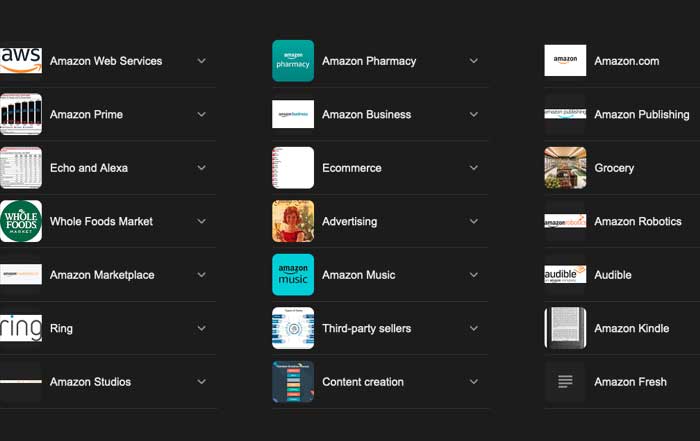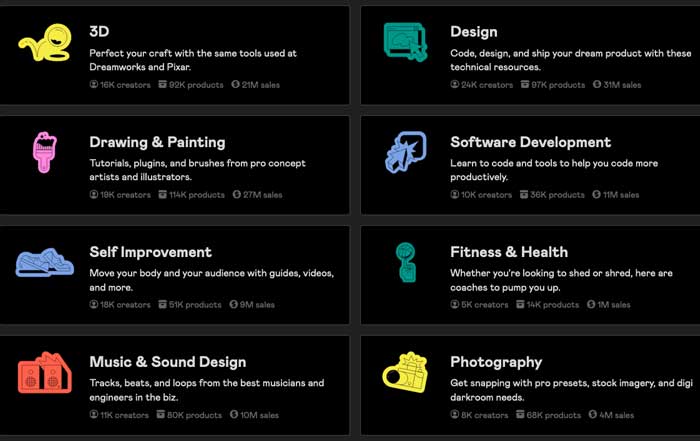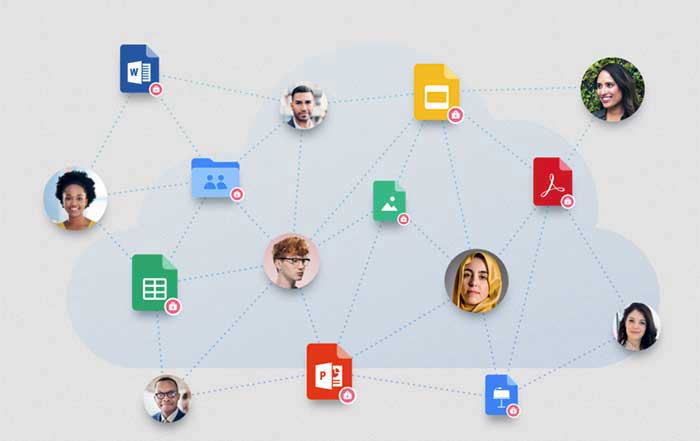Bank of America stands as one of the most influential financial institutions in the modern era, symbolizing both the endurance and evolution of traditional banking amid technological, environmental, and geopolitical transformation. From its vast retail footprint in the United States to its expanding investment banking and sustainable finance operations across Europe, Asia, and Latin America, the bank operates at the intersection of innovation, policy, and purpose. Its strategic trajectory reflects a careful balance of profit maximization, digital modernization, and responsible growth — a model that continues to shape the future of global finance.
For professionals and thought leaders following tradeprofession.com, Bank of America’s evolution provides more than corporate analysis; it offers a lens into the dynamics of twenty-first-century capitalism, where data intelligence, sustainability, and inclusion are redefining what it means to be a global financial powerhouse.
Institutional Legacy and Global Standing
Founded in 1904 and headquartered in Charlotte, North Carolina, Bank of America Corporation (BofA) remains a cornerstone of the American and international banking landscape. It operates through a network that touches over 66 million consumer and small business clients and maintains a presence in more than 35 countries. Its position among the Big Four U.S. banks — alongside JPMorgan Chase, Citigroup, and Wells Fargo — places it at the epicenter of both financial stability and systemic influence.
The bank’s structure is deliberately diversified across four primary business lines: Consumer Banking, Global Wealth and Investment Management (anchored by Merrill), Global Banking, and Global Markets. This integrated structure allows it to maintain resilience through economic cycles and to adapt rapidly to changing market and policy conditions. Its retail and digital banking arms provide stable earnings, while its investment and capital markets divisions enable strategic flexibility and international reach.
In an age of heightened scrutiny, BofA’s dual identity as both a commercial enterprise and a civic institution defines its long-term credibility. It operates not only as a generator of shareholder value but also as an engine of financial literacy, inclusion, and sustainability. This dual mission has become more relevant than ever in 2025, as societies worldwide demand that corporate power serve public purpose.
Navigating the 2025 Economic and Policy Landscape
The year 2025 has introduced new complexities to global finance. Inflationary aftershocks from earlier years are beginning to subside, but uncertainty remains high due to the shifting monetary policies of central banks. Bank of America Global Research has revised its expectations for the U.S. Federal Reserve, anticipating a single 25-basis-point rate cut toward the end of the year. For the bank, which benefited from elevated rates in 2023 and 2024, such moves could compress its net interest income and intensify competition for deposits.
Nevertheless, the institution remains well positioned to navigate these transitions. Its funding base is deep and diversified, and its risk management systems are among the most advanced in the industry. The challenge lies in balancing stability with innovation — maintaining profitability while investing in digital transformation and long-term growth initiatives.
Regulatory conditions are also evolving. The current administration is considering adjustments to capital adequacy and liquidity rules, potentially easing constraints on large financial institutions. For Bank of America, such developments could enable expanded lending capacity and shareholder returns. Yet they also require caution, as reduced capital buffers can amplify exposure to macro shocks. The bank’s disciplined approach to capital management, honed through years of post-crisis prudence, serves as a strategic safeguard in this shifting environment.
Bank of America: Evolution Timeline
From Legacy Institution to Sustainable Finance Leader
Foundation Era
Bank of America founded, establishing the groundwork for what would become a cornerstone of American banking.
- Headquarters established in San Francisco (later moved to Charlotte, NC)
- Built foundation for nationwide retail banking network
- Pioneered consumer banking accessibility
Leadership Transformation
Brian Moynihan becomes CEO and Chairman, introducing the "responsible growth" philosophy that defines modern BofA.
- Implemented comprehensive risk management systems
- Strengthened capital and liquidity positions
- Rebuilt institutional credibility and trust
Sustainability Commitment
Launch of Environmental Business Initiative with $1.5 trillion mobilization goal by 2030.
- Focus on renewable energy and sustainable transportation
- Integration of ESG metrics across all business lines
- Corporate operations achieve carbon neutrality
Digital Intelligence Era
AI-powered virtual assistant Erica® evolves into predictive financial companion with advanced analytics.
- Mobile app becomes primary customer interface
- Machine learning for fraud detection in milliseconds
- Cloud-based infrastructure modernization
Global Expansion & Social Impact
Serving 66M+ clients across 35+ countries with enhanced focus on inclusion and workforce transformation.
- $741B+ deployed toward sustainability goals (ahead of schedule)
- 50% leadership positions held by women and minorities
- Pioneering digital asset tokenization and CBDC pilots
Future Vision
Projected completion of $1.5T sustainability commitment and full embedded finance ecosystem integration.
- Leadership in sustainable finance standards globally
- Full API-driven open banking framework
- Next-generation intelligent banking ecosystem
Click any milestone to explore details
Globalization and Regional Diversification
Beyond the U.S. domestic market, Bank of America continues to strengthen its global footprint across Europe, Asia-Pacific, and Latin America. In London, the bank’s expanded BofA Securities division remains one of the leading underwriters of European corporate debt and equity issuances. In Frankfurt and Paris, it has deepened relationships with multinational corporates and sovereign entities seeking advisory services for green and sustainability-linked bonds.
In Asia, the institution has been active in markets such as Singapore, Hong Kong, Tokyo, and Sydney, providing liquidity, structured financing, and digital banking solutions to regional conglomerates and institutional clients. Singapore in particular has emerged as a hub for sustainable finance innovation, and BofA has leveraged its expertise to support renewable energy and carbon-trading projects aligned with Southeast Asia’s green transition. These cross-border efforts are not only expanding the bank’s geographic reach but also cementing its position as a catalyst for sustainable economic development.
In Latin America, particularly in Brazil, Chile, and Mexico, the bank continues to serve corporate clients involved in infrastructure, mining, and energy. Its project-finance teams are increasingly focused on public-private partnerships that integrate ESG metrics into development financing. Through its Global Treasury Services unit, Bank of America supports multinational clients operating in emerging markets with real-time payments, foreign-exchange risk management, and digital transaction platforms that connect seamlessly to its global networks. The institution’s ability to operate effectively in diverse regulatory environments underscores its adaptability and operational sophistication.
Digital Transformation and the Intelligent Banking Ecosystem
The most visible transformation in 2025 has been Bank of America’s deep investment in digital ecosystems. The bank’s mobile app now serves as the primary interface for a majority of its retail customers, integrating payment solutions, budgeting tools, investment dashboards, and personalized advisory modules. Its AI-powered virtual assistant, Erica®, has evolved from a simple chatbot into a predictive financial companion, capable of identifying spending anomalies, recommending savings strategies, and integrating seamlessly with digital wealth platforms such as Merrill Guided Investing.
Behind the scenes, BofA has re-architected its data infrastructure to enable faster analytics, secure cloud adoption, and advanced fraud prevention. Machine learning models now detect transaction irregularities in milliseconds, improving customer trust and operational security. The integration of artificial intelligence, automation, and human expertise has yielded a more responsive, personalized, and cost-efficient service environment.
At the enterprise level, the bank’s internal AI tools support credit modeling, risk forecasting, and client segmentation. Its collaboration with leading technology partners, including Microsoft Azure and other cloud providers, reflects its hybrid approach to digitalization: combining proprietary innovation with external partnerships to maintain agility. For readers seeking a deeper understanding of AI’s impact on business, tradeprofession.com/artificialintelligence.html offers extensive insights into the technologies shaping financial services in 2025.
Digital innovation extends beyond consumer banking. In the institutional sphere, BofA has pioneered digital issuance platforms for corporate bonds, leveraging blockchain-inspired architectures to improve settlement efficiency and transparency. The bank is also experimenting with tokenization of real-world assets — an initiative aligned with the broader movement toward decentralized finance (DeFi) and digital securities regulation. Although regulatory clarity remains uneven, these experiments demonstrate how traditional banks can adopt emerging technologies responsibly, without compromising compliance or stability.
Commitment to Sustainable Finance and Climate Action
No area reflects Bank of America’s long-term vision more clearly than its dedication to sustainability. Through its Environmental Business Initiative, the bank has committed to mobilizing $1.5 trillion by 2030, allocating capital to renewable energy, sustainable transportation, resource efficiency, and social impact ventures. Having already deployed more than $741 billion by mid-2025, BofA is well ahead of schedule, establishing itself as a global frontrunner in ESG-aligned finance.
Its sustainability framework encompasses lending, investment, advisory, and proprietary research. The bank helps clients design transition plans, issue green and social bonds, and access sustainability-linked loans tied to measurable environmental outcomes. Its own corporate operations are also carbon neutral, and it continues to invest in energy-efficient infrastructure and renewable power procurement for all major offices.
BofA’s role in advancing climate finance extends into partnerships with multilateral institutions and governments. It collaborates with the World Bank, the United Nations Environment Programme Finance Initiative (UNEP FI), and the Sustainable Markets Initiative to mobilize capital toward global climate goals. The bank also invests directly in frontier markets such as carbon capture, nature-based solutions, and biodiversity conservation. Its $205 million investment in a U.S. carbon-capture tax credit marketplace demonstrates how financial engineering can accelerate decarbonization through innovative incentives.
This multidimensional approach aligns with the expectations of modern stakeholders who demand that financial institutions measure success not solely by profit but by their contribution to planetary and social wellbeing. Readers can learn more about such frameworks in related coverage at tradeprofession.com/sustainable.html and tradeprofession.com/innovation.html, which explore sustainable business models reshaping global markets.
Social Impact, Inclusion, and Workforce Transformation
Bank of America’s social strategy complements its environmental focus by emphasizing inclusion, opportunity, and human capital development. In 2025, it became one of the first major U.S. banks to raise its minimum hourly wage to $25, reinforcing its commitment to equitable growth. Its internal diversity initiatives ensure representation across gender and ethnic lines, with nearly 50 percent of leadership positions now held by women and underrepresented minorities.
Through its Making an Impact and Neighborhood Builders programs, the bank channels hundreds of millions annually into affordable housing, small-business support, and workforce training. It operates in partnership with local governments and nonprofit organizations to expand credit access and homeownership in underserved communities. The Bank of America Charitable Foundation also continues to fund education and health equity projects that align with its broader vision of economic mobility.
Within its corporate culture, the institution prioritizes continuous learning, digital literacy, and ethical leadership. Employees receive extensive training in emerging technologies, ESG principles, and responsible AI usage, ensuring that innovation proceeds with accountability. For those interested in professional growth and leadership within large enterprises, tradeprofession.com/executive.html and tradeprofession.com/employment.html feature discussions on how organizations like BofA sustain high-performance cultures while embracing change.
Risk Management and Financial Resilience
A hallmark of Bank of America’s operational philosophy is disciplined risk management. Its post-2008 reforms created one of the strongest capital and liquidity positions among global banks, and those lessons continue to guide decision-making today. As of 2025, the bank’s Common Equity Tier 1 (CET1) ratio remains comfortably above regulatory minimums, reflecting prudent balance-sheet governance.
In a volatile rate environment, the bank carefully manages its net interest margin, hedging exposure to rapid yield-curve changes and maintaining loan quality through conservative underwriting. Credit losses remain manageable, supported by diversified portfolios across consumer, commercial, and institutional segments. However, rising stress in commercial real estate markets poses a moderate challenge, particularly in office and retail properties. BofA has responded by tightening lending standards and increasing loan-loss provisions where necessary.
Its trading and markets divisions have also demonstrated resilience. In 2024, global markets revenue exceeded expectations, driven by strong performance in fixed income and foreign-exchange trading. The institution’s ability to combine macroeconomic research with real-time data execution enables agile responses to market volatility. This analytical sophistication positions BofA as a trusted partner for institutional investors navigating complex global conditions.
For readers interested in deeper economic perspectives on these dynamics, tradeprofession.com/economy.html and tradeprofession.com/stockexchange.html offer ongoing commentary on how macroeconomic shifts intersect with capital-market performance.
Leadership, Governance, and Succession Planning
The enduring leadership of Brian Moynihan remains a defining element of Bank of America’s identity. Since assuming the role of CEO and Chairman in 2010, Moynihan has steered the organization through a decade of regulatory reform, digital reinvention, and cultural transformation. His philosophy — described as “responsible growth” — has become synonymous with the bank’s brand. It emphasizes serving clients, investing in employees, sharing success with communities, and delivering sustainable returns to shareholders.
Moynihan’s external influence is equally profound. As chair of the Sustainable Markets Initiative, he advocates globally for aligning business objectives with environmental and social progress. His participation in international forums underscores the bank’s role as a thought leader in responsible capitalism.
Yet, as Moynihan approaches the later phase of his tenure, succession planning has gained strategic importance. The appointment of Dean Athanasia, head of regional banking, and Jim DeMare, head of global markets, as co-presidents reflects a deliberate and transparent transition strategy. CFO Alastair Borthwick also continues to play a critical role in maintaining investor confidence and financial discipline. This structured leadership evolution ensures continuity, signaling to shareholders that the institution’s long-term vision remains intact beyond any individual leader.
Governance standards at BofA remain among the highest in the financial sector. The board emphasizes independence, diversity, and accountability. Annual reviews of risk frameworks, sustainability metrics, and executive compensation ensure alignment with stakeholder expectations. For leadership insights and global governance analysis, tradeprofession.com/founders.html and tradeprofession.com/business.html provide additional context on executive transitions and corporate ethics.
Financial Performance and Shareholder Outlook
Bank of America’s financial metrics through the first half of 2025 reveal steady progress despite macroeconomic uncertainty. Net income remains strong, supported by trading revenue, consumer lending, and wealth management performance. Its loan book continues to grow moderately, while delinquency rates remain below historical averages. The bank’s focus on cost discipline, digitization, and efficiency has yielded significant savings, allowing reinvestment into technology and sustainability initiatives.
Dividend policy remains shareholder-friendly, with consistent quarterly distributions and occasional buybacks reflecting the bank’s robust capital position. Analysts forecast a stable earnings outlook for 2025–2026, assuming rate cuts remain limited and credit conditions do not deteriorate sharply. The combination of diversified income, cost control, and strategic investment places BofA in a favorable position relative to its peers.
In equity markets, Bank of America’s stock performance reflects both investor confidence and macro-sensitivity. While cyclical downturns may temporarily pressure valuation, long-term investors continue to view the institution as a bellwether of U.S. financial stability and innovation. For readers exploring broader trends in global equities, investment diversification, and market forecasting, tradeprofession.com/investment.html and tradeprofession.com/global.html provide in-depth analysis on evolving capital flows.
Innovation in Data, Payments, and Embedded Finance
One of the most intriguing aspects of Bank of America’s modernization is its strategic approach to embedded finance and data-driven ecosystems. The bank is building a framework that allows third-party integration through APIs, enabling corporate clients and fintech partners to embed BofA payment and treasury services directly into their platforms. This model anticipates the next wave of open banking, in which financial services become interoperable, personalized, and seamlessly integrated into digital life.
The bank is also a key participant in pilot programs for central bank digital currencies (CBDCs) and cross-border payment modernization. Its collaboration with the Federal Reserve and international regulatory bodies highlights its commitment to shaping the future architecture of money. Meanwhile, in private markets, BofA’s research teams are analyzing the convergence of blockchain, stablecoins, and tokenized assets to understand their implications for liquidity, compliance, and investor protection.
Such innovation requires not only technology but also trust. The institution’s rigorous data-protection framework and cybersecurity investments ensure that clients’ financial information remains secure in an increasingly connected environment. Through these measures, BofA continues to set industry standards for responsible digital banking, demonstrating how traditional finance can coexist with, and even guide, emerging technologies.
Strategic Outlook and Future Scenarios
Looking forward, Bank of America’s strategic direction reflects a convergence of economic pragmatism and visionary leadership. Its ability to sustain growth while adapting to evolving markets depends on several interrelated priorities: maintaining profitability amid lower interest margins, scaling digital transformation responsibly, deepening ESG integration, and sustaining a high-trust corporate culture.
In one scenario, the bank continues on its balanced growth trajectory, advancing gradually while maintaining capital discipline and operational efficiency. In another, it accelerates its leadership in sustainable finance, leveraging its global influence to define new standards in climate reporting, transition lending, and impact measurement. Alternatively, if macroeconomic shocks or regulatory tightening reemerge, BofA’s fortress balance sheet and diversified business model would provide defensive strength.
Whatever the path, the institution’s focus on responsible growth remains its compass. Its track record of resilience — from the global financial crisis to the pandemic recovery — suggests that adaptability is embedded in its DNA.
Future of Global Banking Through Bank of America’s Lens
Bank of America exemplifies the transformation of global banking from transactional finance to intelligent, sustainable, and socially attuned enterprise. It is not merely a financial intermediary but a system orchestrator — linking technology, sustainability, and human aspiration through the architecture of modern finance.
Its vast global operations, from Charlotte to Singapore, its leadership in ESG mobilization, and its commitment to ethical governance collectively demonstrate that profitability and purpose need not be opposing forces. In aligning shareholder interests with global progress, Bank of America defines what it means to be a twenty-first-century financial institution.
For readers of tradeprofession.com, the bank’s story is not only about capital markets or balance sheets; it is about foresight, transformation, and the enduring capacity of institutions to evolve with humanity’s changing needs. Its journey illuminates the interconnected threads of banking, innovation, technology, and sustainability, all of which are explored further through related insights at tradeprofession.com/technology.html, tradeprofession.com/innovation.html, and tradeprofession.com/stockexchange.html.
In the final analysis, Bank of America in 2025 represents more than the success of a single corporation. It represents a vision of finance as an enabler of human progress — one that integrates digital intelligence, global responsibility, and economic opportunity into a coherent, sustainable future.










